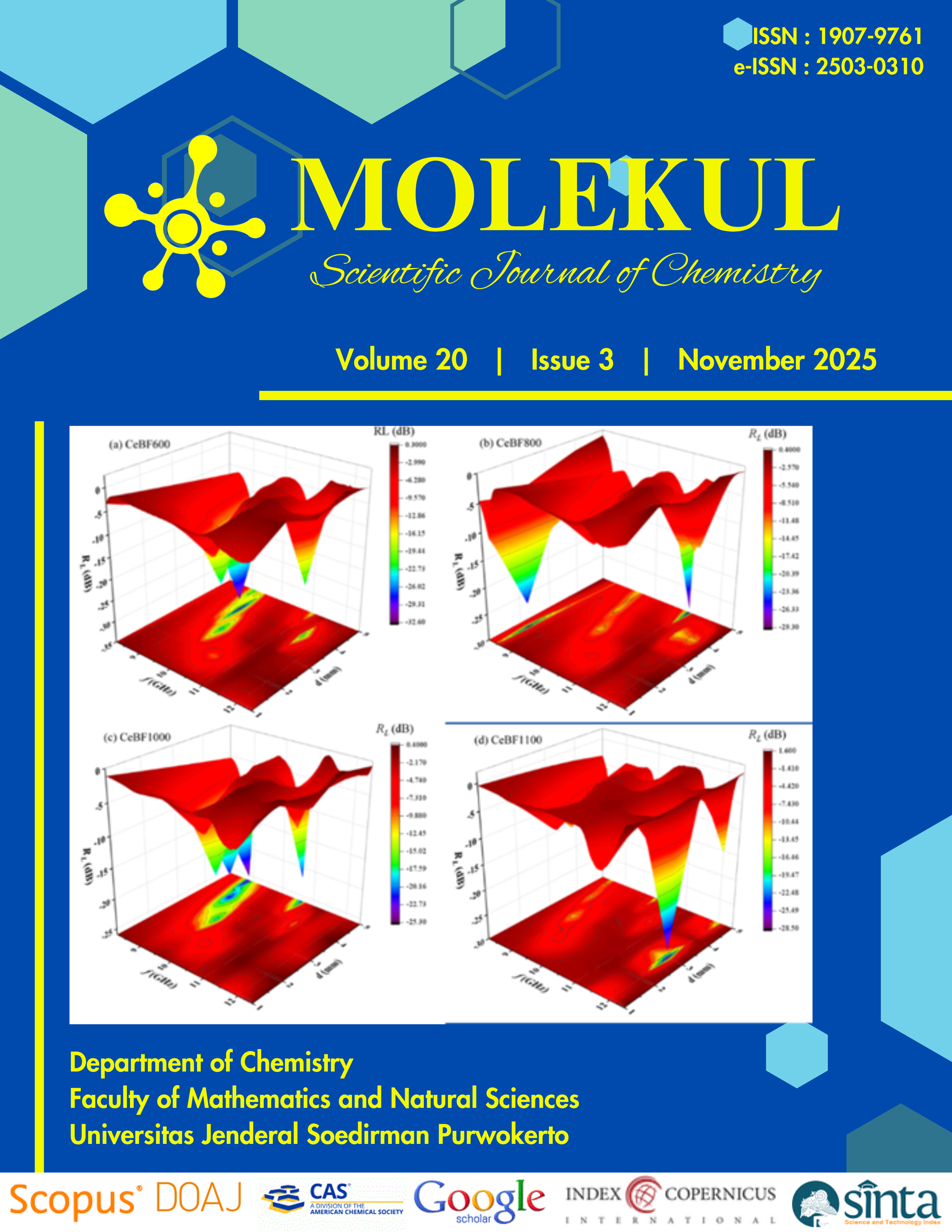Effect of Cosolvent and Polymer on LTG-OF HPMC P.603/PVA-based Lamotrigine Orodispersible Film: Optimization and Physicochemical Characterization
Effect of Cosolvent and Polymer on HPMC P.603/PVA-based Lamotrigine Orodispersible Film
Abstract
ABSTRACT. Lamotrigine (LTG), classified as BCS class II, is dissolved in cosolvent ethanol (EtOH) or ethyl acetate (EA) to enhance solubility. The objectives of this study are to identify the appropriate formulation of LTG orodispersible film (OF) based on hydroxypropyl methylcellulose Pharmacoat® 603 and polyvinyl alcohol (HPMC P.603/PVA) polymer with EtOH or EA solvency using Central Composite Design in Response Surface Methodology (CCD-RSM). An experimental approach was utilized to investigate the effect of cosolvent amount and HPMC P.603/PVA ratios on the film disintegration time (DT) and folding endurance (FE). The optimized OF-EA composition was 0.46 HPMC P.603/PVA ratio and 3.66% EA with a desirability of 0.817. In comparison, the optimal OF-EtOH composition was 0.87 HPMC P.603/PVA ratio and 6.19% EtOH with a desirability of 0.843. The characteristic data for the optimal formulas include: OF-EtOH: weight variation 92.05±4.81 mg, thickness 0.15±0.01 mm, DT 36.11±1.48 sec, and FE 310.33±5.03; and OF-EA: weight variation 93.72±1.50 mg, thickness 0.16±0.00 mm, DT 26.73±3.32 sec, and FE 470.6±37.44. Based on the OF-EtOH FE, the HPMC P.603/PVA ratio had a greater effect compared to the amount of EtOH (p<0.05). The analysis of variance (ANOVA) demonstrated that the amount of EA had a greater impact compared to the HPMC P.603/PVA ratio, with statistical significance (p<0.05). The EtOH cosolvent was preferable to EA based on the LTG solubility and OF dissolution profile. LTG OF had favorable physicochemical properties and showed promise as a rapid-dissolving formulation for therapeutic purposes.
Keywords: Central composite design, cosolvency, disintegration time, folding endurance, oral film.
Authors agree with the statements below:
- Authors automatically transfer the copyright to the MOLEKUL journal and grant the journal right of first publication with the work simultaneously licensed under a Creative Commons Attribution 4.0 International License (CC BY 4.0).
- Authors are able to enter into separate permission for the non-exclusive distribution of the journal's published version of the work (e.g., post it to an institutional repository or publish it in a book), with an acknowledgment of its initial publication in this journal.













